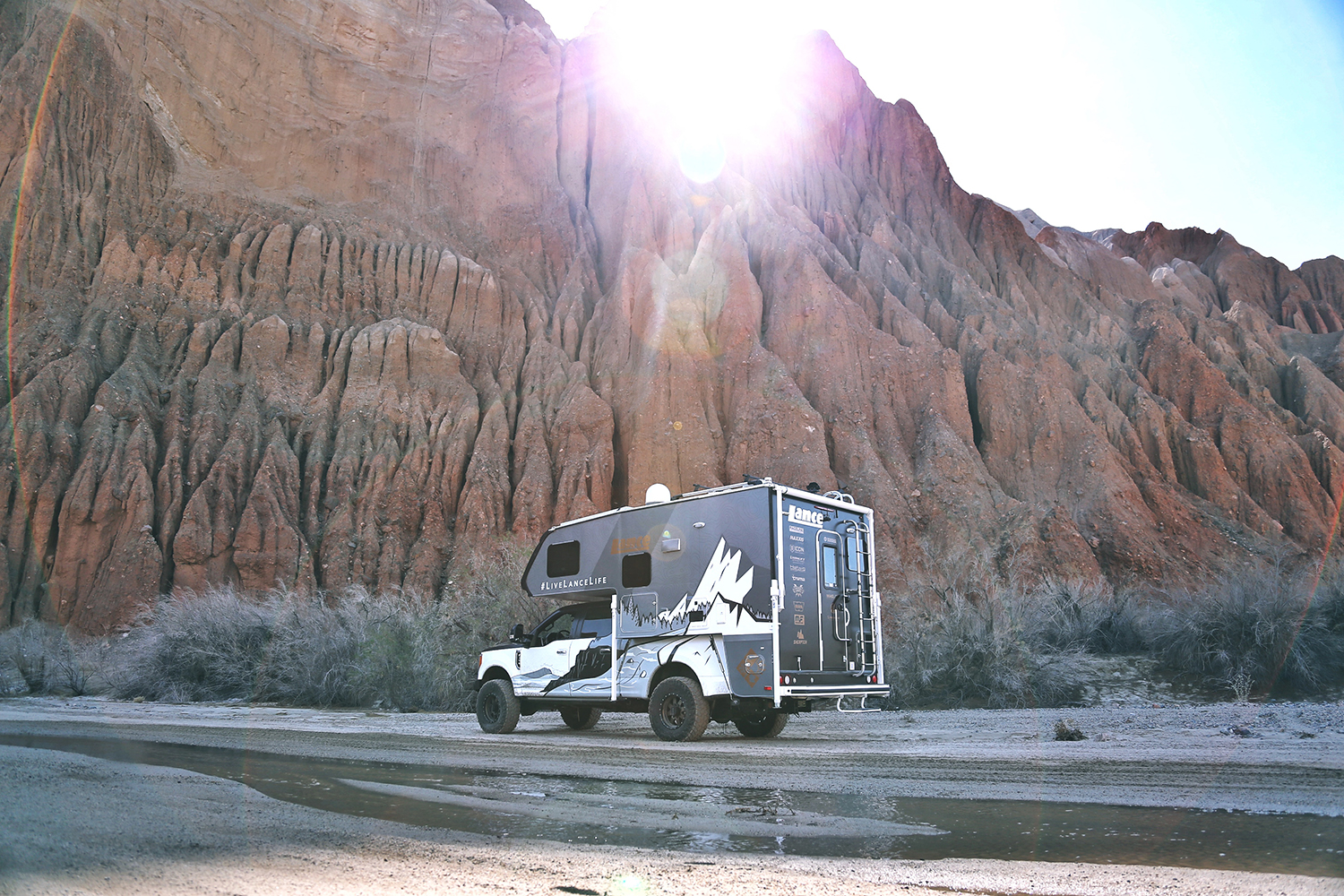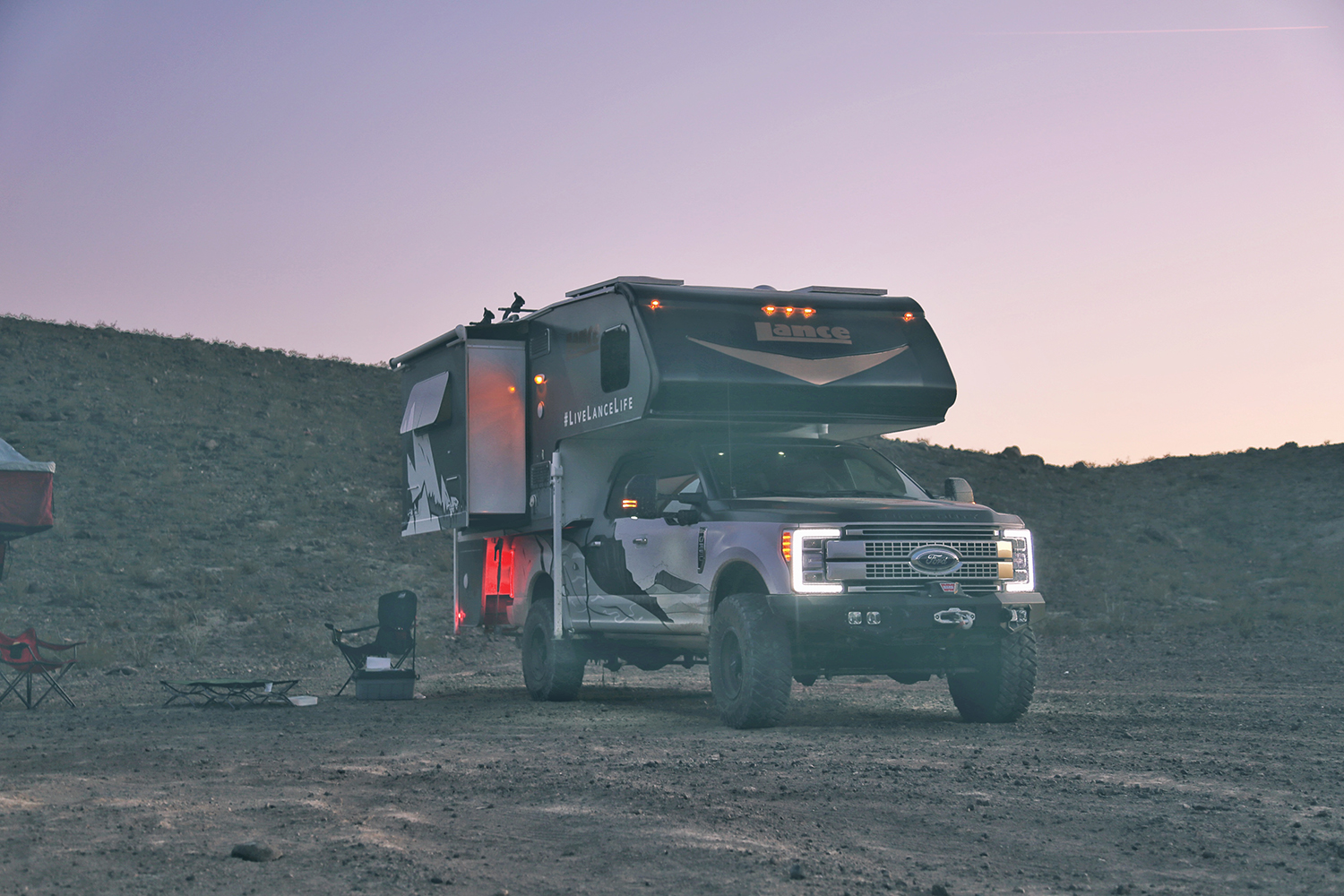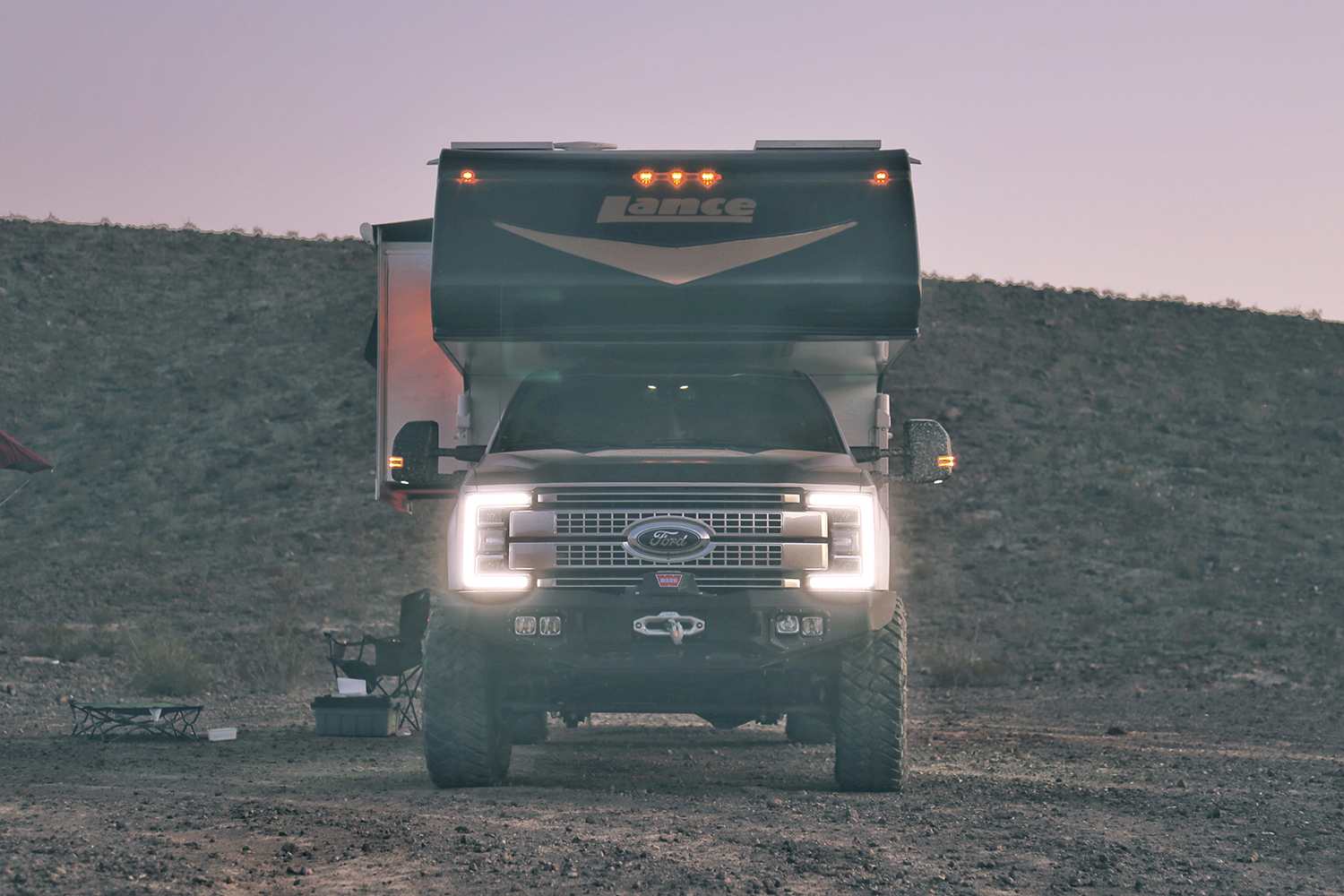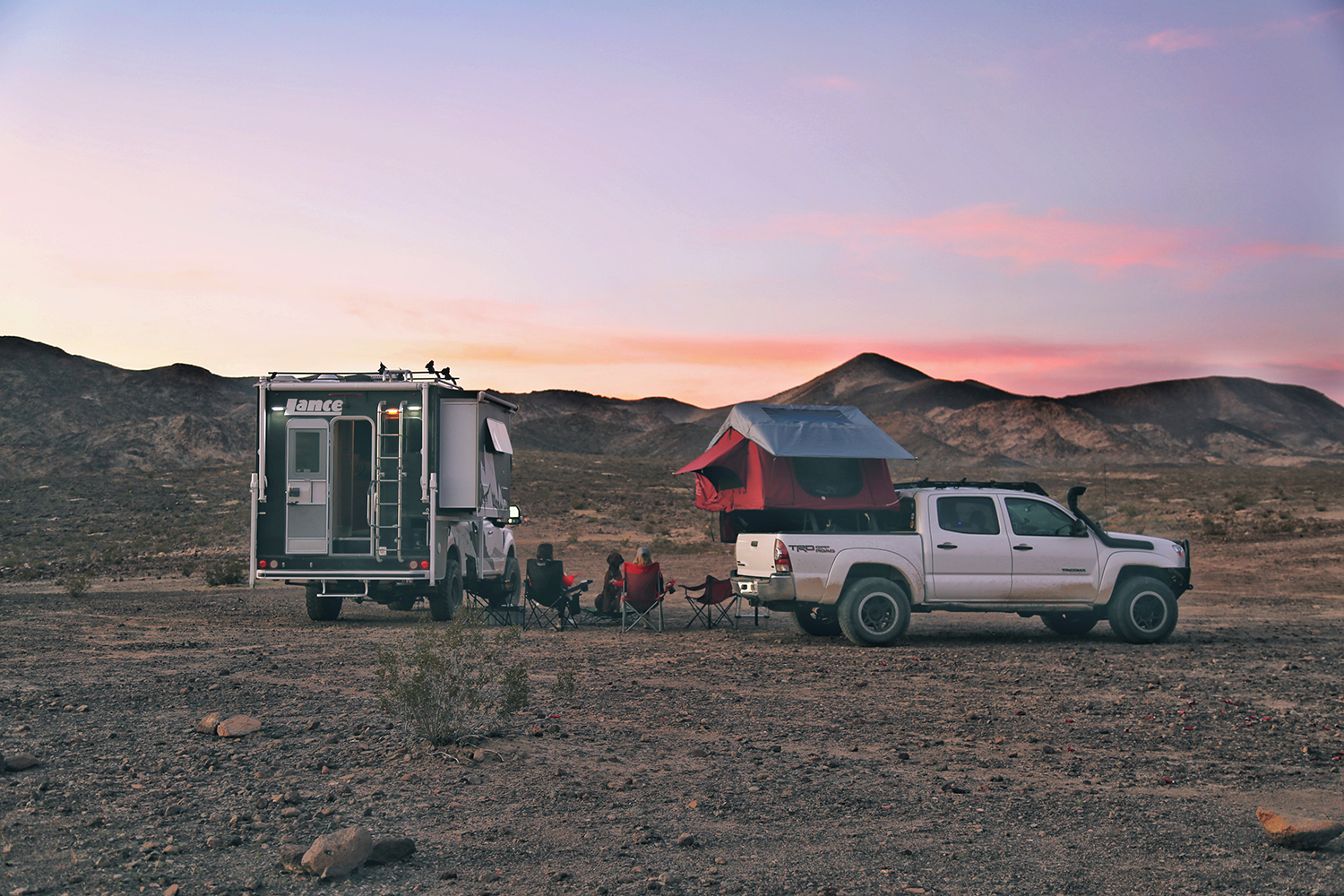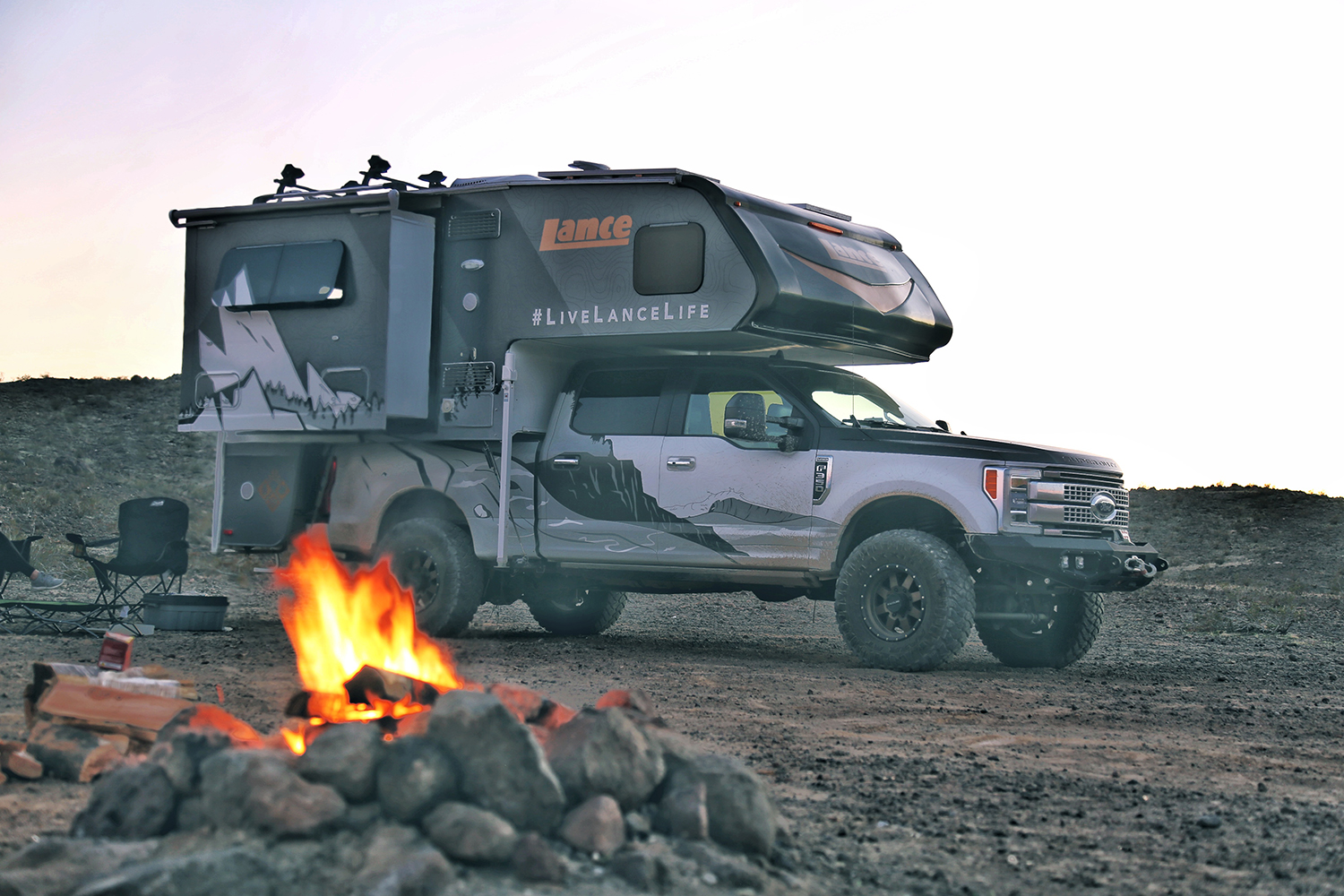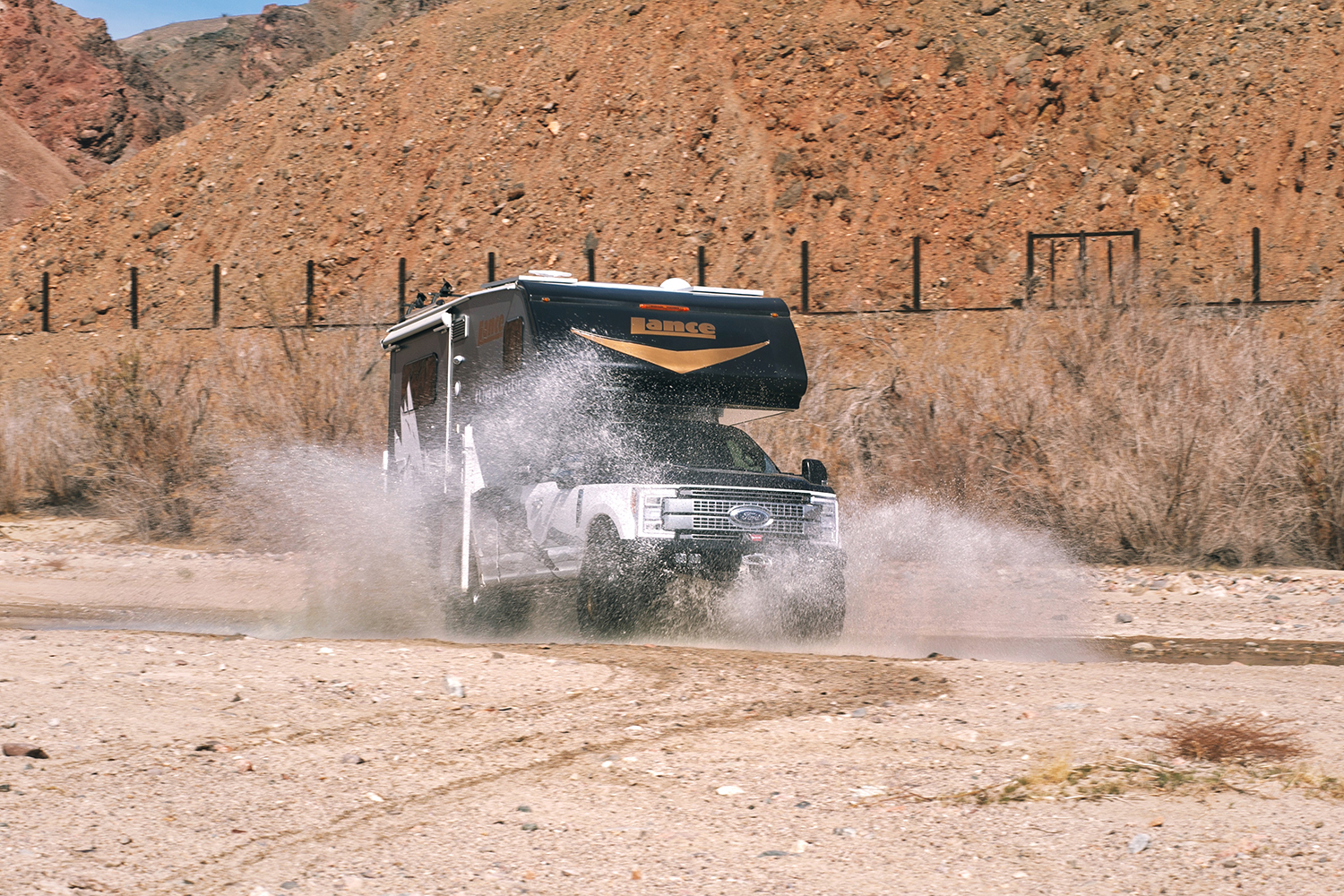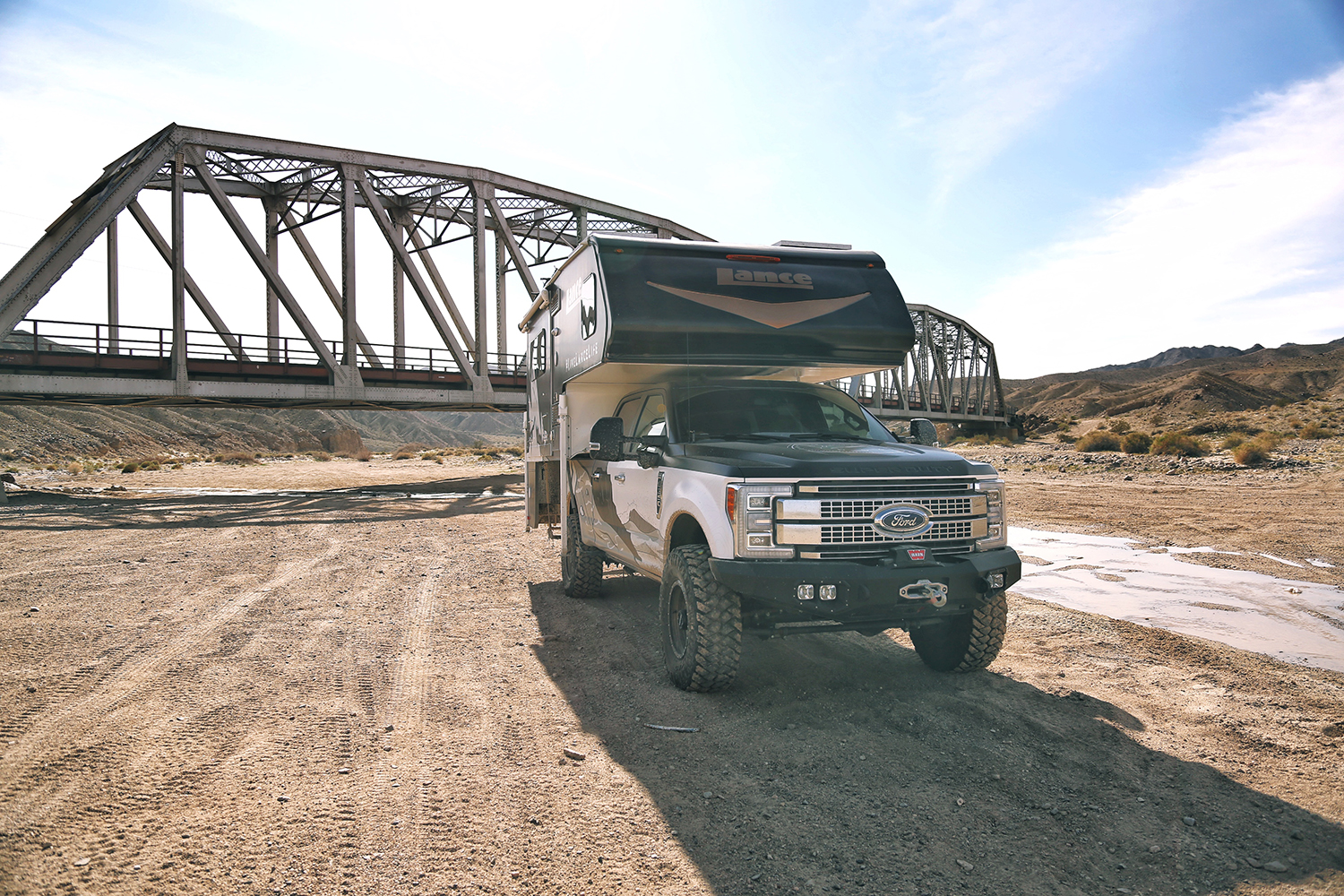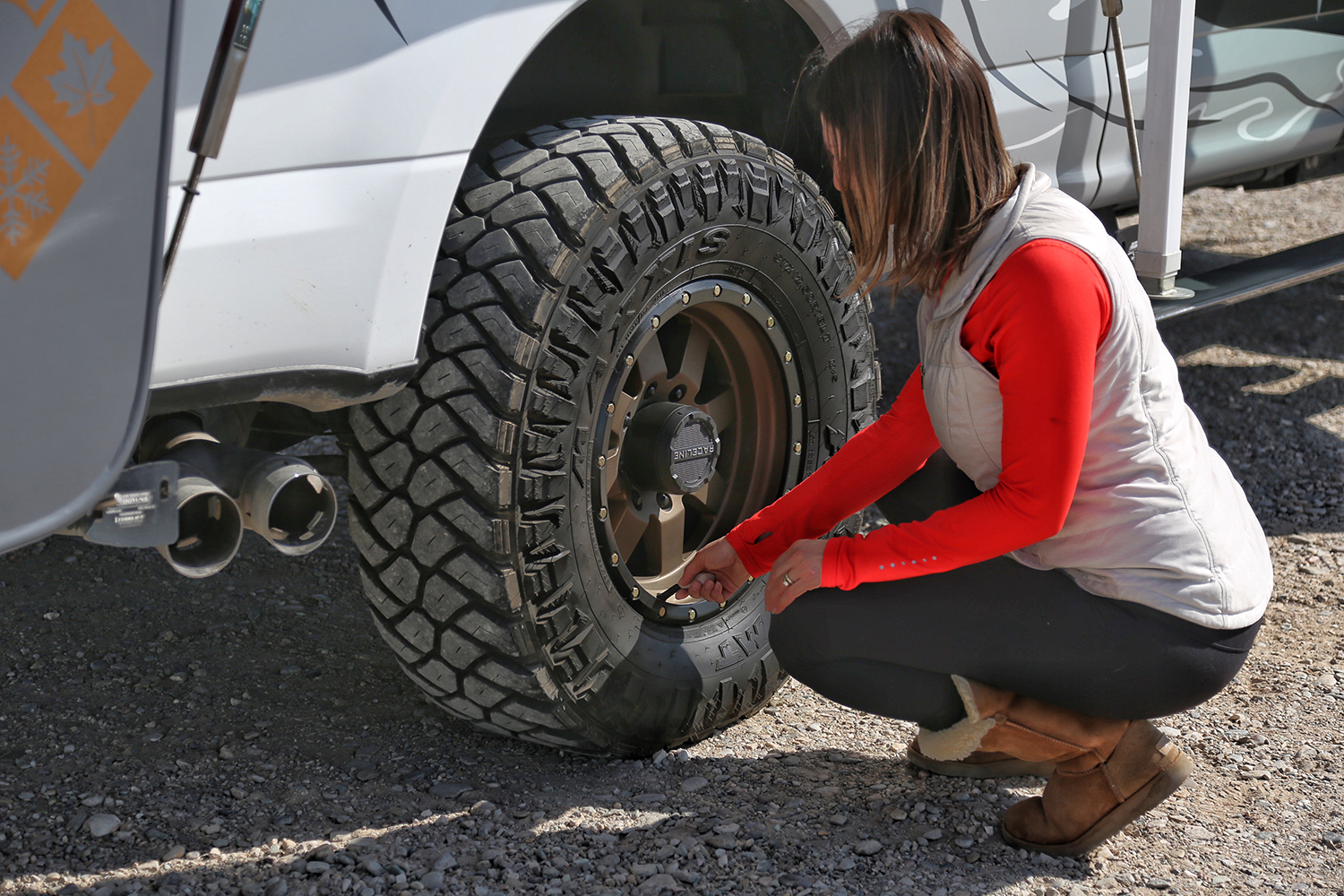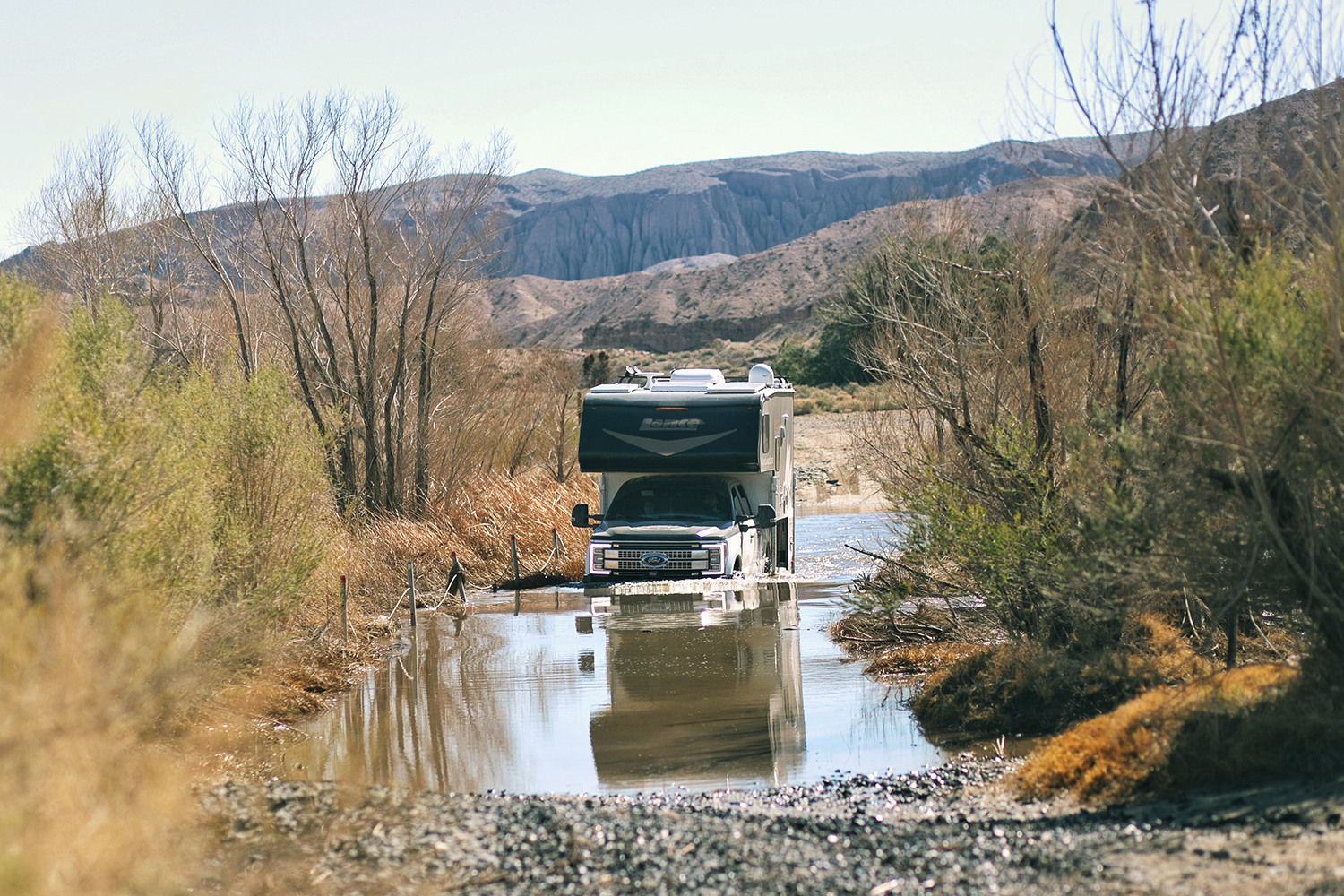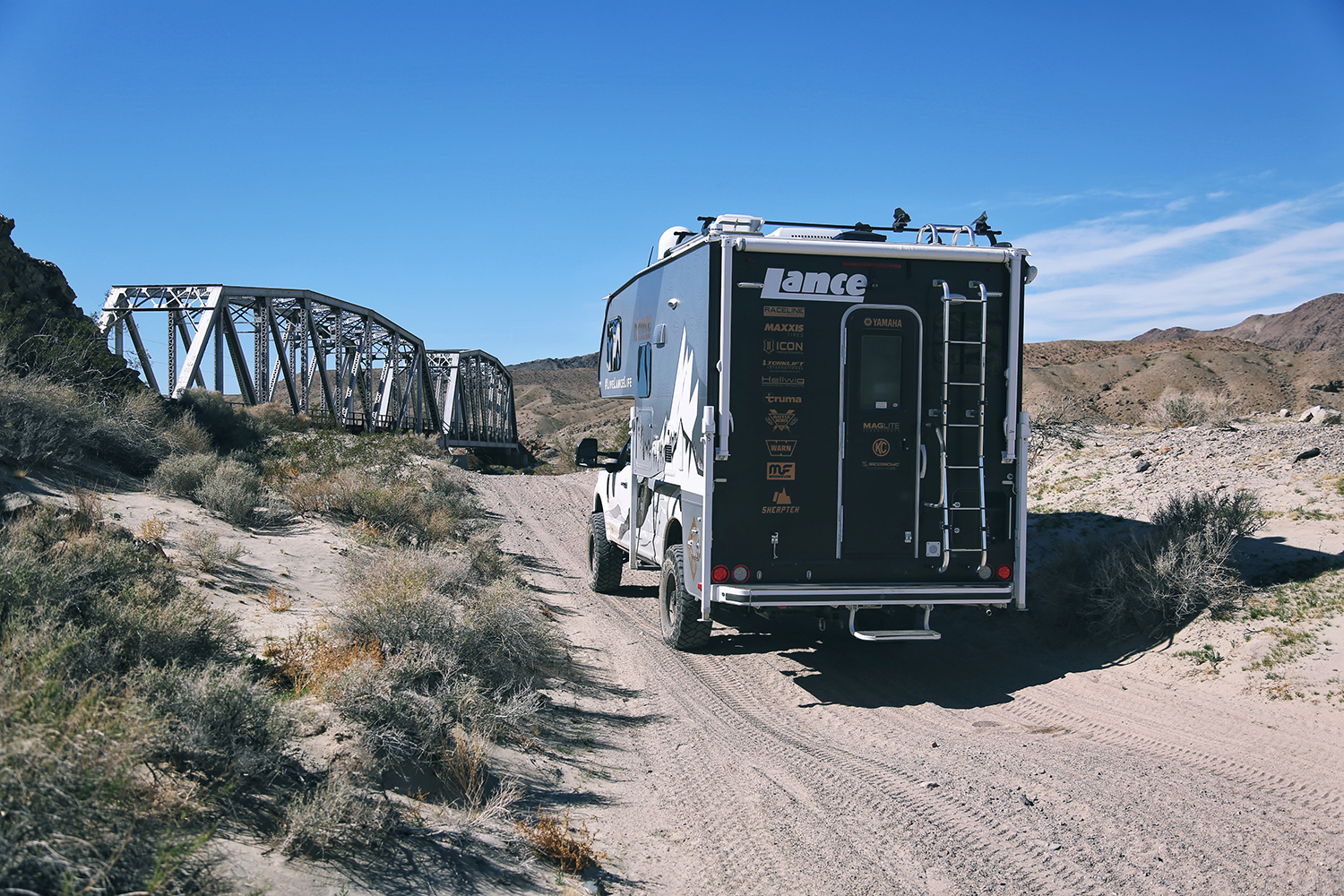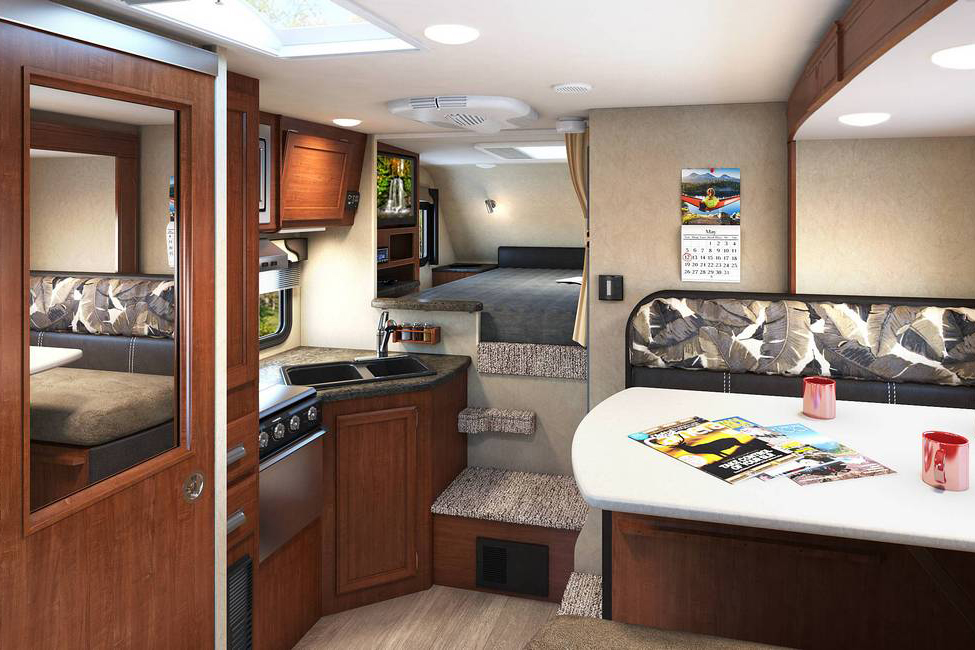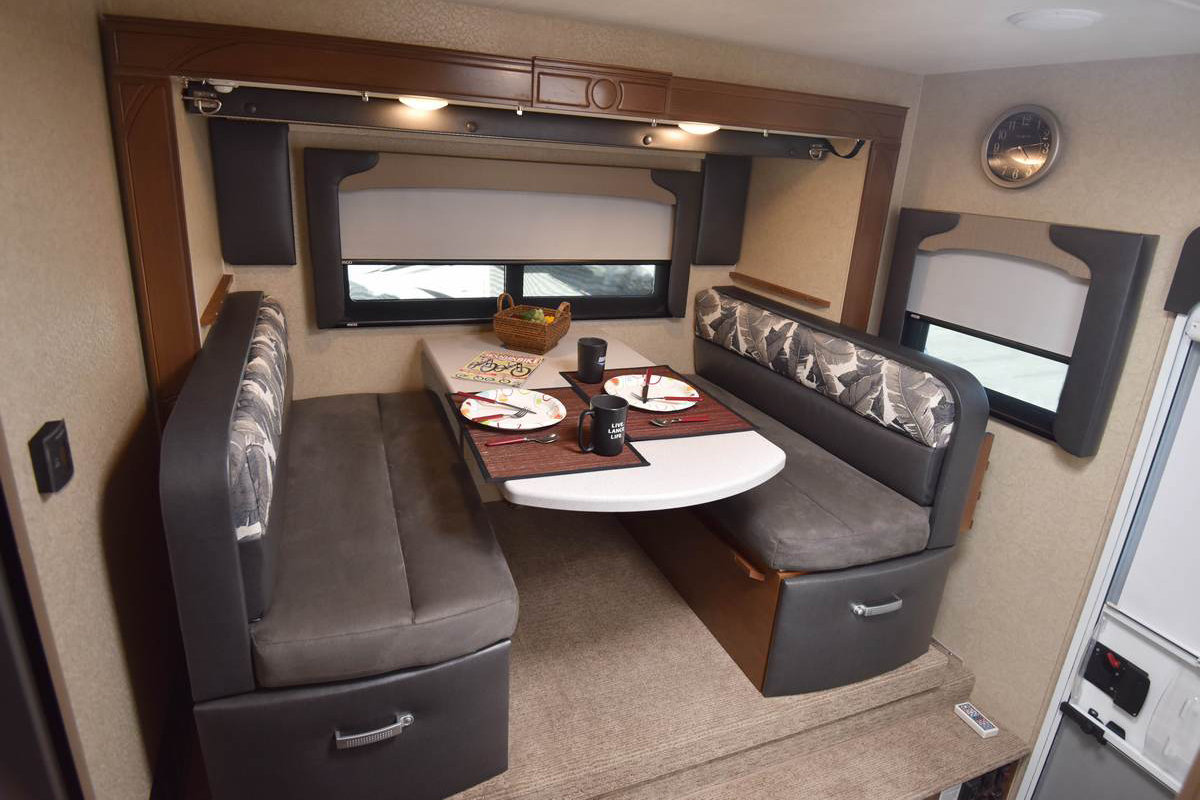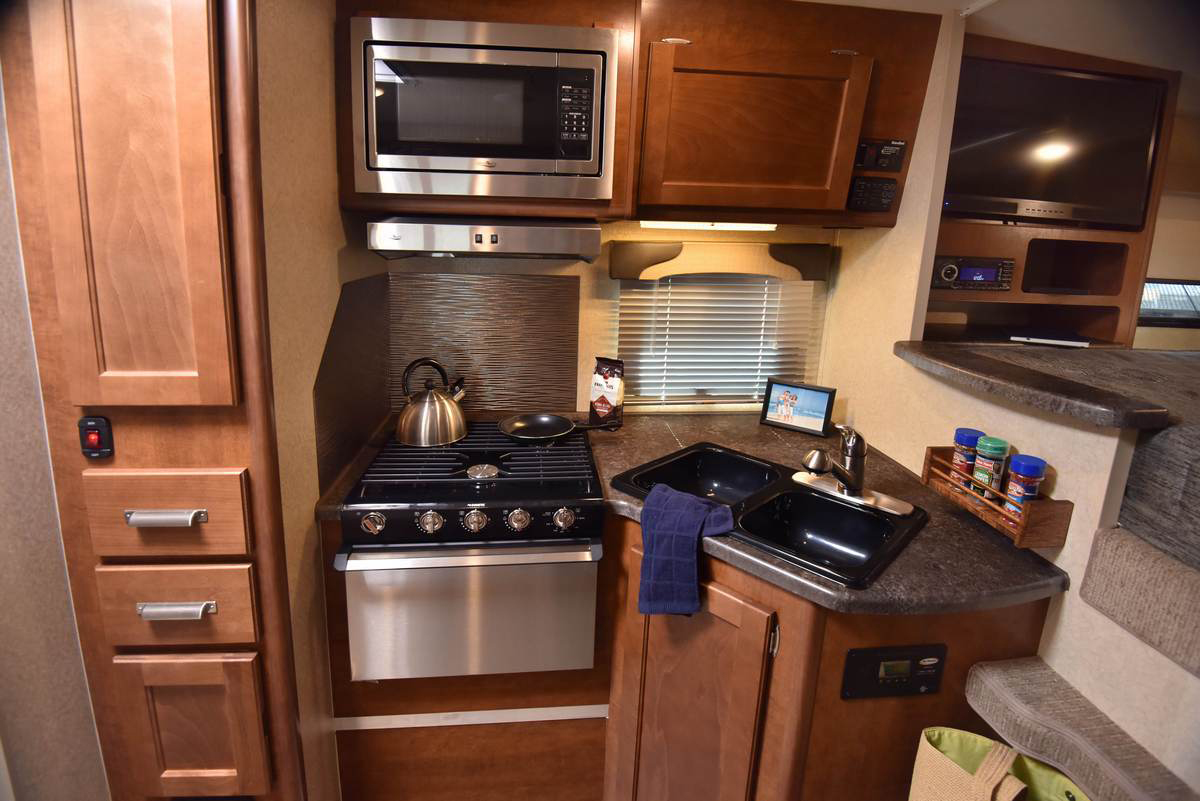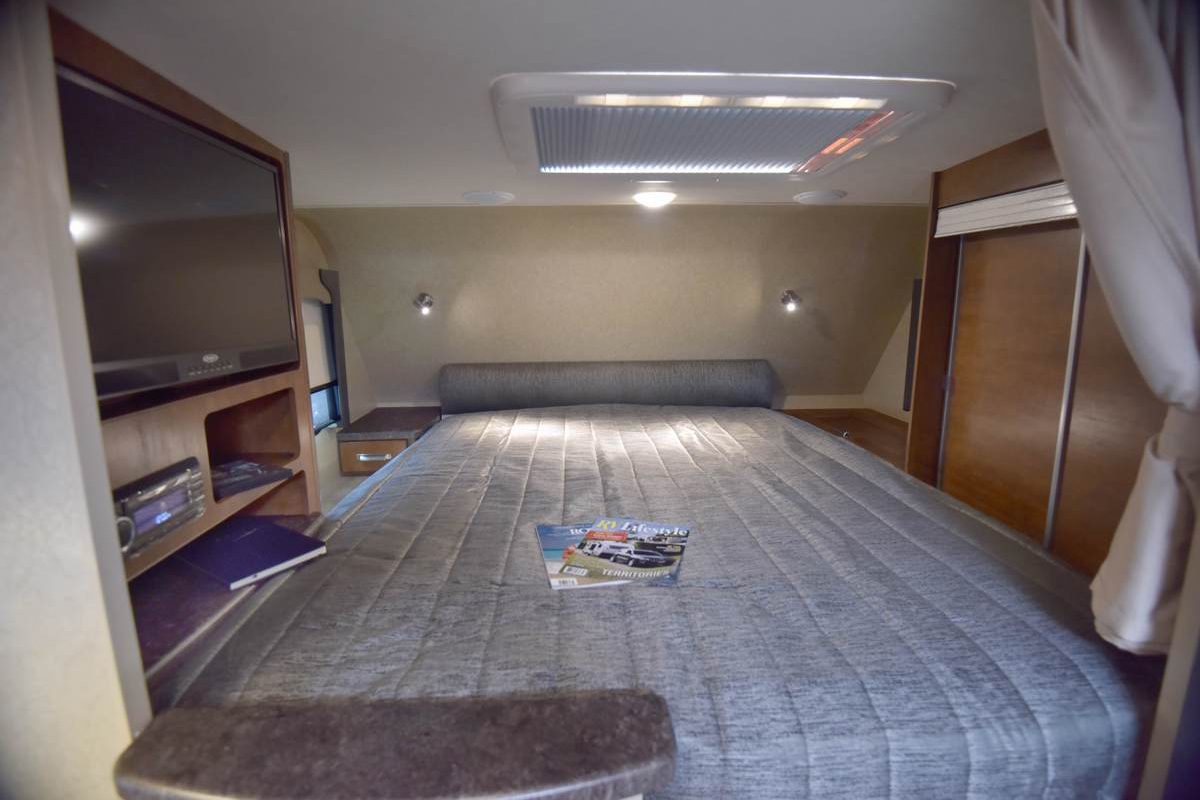When you picture overlanding, you likely envision a tricked-out truck with meaty tires, spotlights, and a rooftop tent. As the off-roading hobby has gained popularity, enthusiasts have played with these elements in thousands of variations, but whatever you’ve seen on Instagram probably won’t prepare you for Lance Camper’s one-off Altimeter project. When it comes to the best travel trailers and rooftop tents, luxury is as important as ever.

Designed to showcase the company’s model 855S camper in a (literally) outlandish application, the Altimeter is a 2019 Ford F-350 Super Duty diesel crew cab short bed pickup fortified with the finest off-road goodies. It is, in a word, impressive. But aesthetics alone won’t get you very far off the beaten path, so to prove the Altimeter’s overland mettle, I’m taking it on a stretch of technical terrain known as Mojave Road.
It takes all of five seconds behind the wheel of the Altimeter to realize this is not some thrown-together effort. Save for extended braking distances from an extra few thousand pounds of payload and mild hum from its 37-inch Maxxis tires, the Altimeter drives as smoothly on pavement as a standard F-350. That’s no small feat, given the rig’s vaulted center of gravity and weight-adding features like a Warn Ascent bumper and winch. Credit for control goes to an Icon Stage 5 Vehicle Dynamics suspension, Hellwig sway bars, and Hellwig air springs in the rear.
Without the stress of piloting a roller coaster, it’s easier to enjoy the F-350 Platinum’s amenities. While streaming music through a Bang & Olufsen sound system, my wife and I indulge in a butt and back massage via heated leather seats. Our Rhodesian Ridgeback doesn’t seem to mind his own spacious digs in the second row, either. That’s not to say I can hit autopilot completely – strong winds catch the side of the camper like a sail and would move us beyond our lane if not for attentive counter-steer. Relax, just don’t relax, you know?
Turning off the highway and onto dirt, we make a quick pitstop to air down the tires and let the dog leave his calling card. Back in motion, the Altimeter floats over loosely packed earth like a cruise liner over tiny whitecaps. To keep the camper from rocking too enthusiastically front-to-back, I carefully modulate the throttle. Unfortunately, side-to-side motion is only mitigated by slowing to a crawl or avoiding obstacles altogether. Changing our approach angle reduces the number of these would-be annoyances significantly, however.
An hour in, we encounter our first hand-wringer: a water crossing. The Altimeter is tall, but it doesn’t have a snorkel, so I do the brave thing and send my buddy in first with his scuba-ready Tacoma. At its deepest, the water rises to the mid-point of his doors as the Tacoma bobs its way across. After running some quick calculations based on our height differential, I estimate that we’re clear to cross.
I switch to 4WD Lo, turn off traction control, and creep into the pond. Steadily, the Altimeter plods along while churning a modest wake. A small crowd has gathered on the other side to see if the big girl can float. For a moment, I’m Evel Knievel pulling off a crazy jump as the bystanders celebrate my success (really, it’s more like a few brief claps and mumbled congratulations). The next minute, the audience is gone and I’m picking off bits of plant life from the truck.
After lunch, we continue into the desert. The dirt powders, then becomes sand as we enter low dunes. The torquey diesel ploughs through the golden sea, drifting in and out of tracks left by predecessors. The ride is now even more plush and I secretly (because my wife is starting to feel nauseous) wish we could motor on like this forever. Eventually, though, the dream drive ends and a rock-strewn hill emerges.
Back in 4WD Lo, I lock the rear differential and proceed cautiously. Here, more than ever, I’m wary of a misstep that could overturn the rig. With a calculated line, I let the biting edges of the tires claw up rocks and ease down them. The camper support beams creak in protest, but hold the structure in place. We crest the hill and take a breather. Outside the truck, I tighten each of the four posts and pause to admire the sea-to-mountains graphic adorning the side of the rig. It’s no coincidence we didn’t choose an adventure with narrow, tree-lined trails – I’d rather not mar any portion of this killer wrap.
By now, the group is wiped, so we make camp in a vast valley bordered by jutting peaks. And by “make camp,” I mean we put the F-350 in park, engage the camper pop-out via remote, and turn on the cabin lights. Nearby, our friends labor to unfurl and erect their rooftop tent and retrieve necessities from their truck. With little else to do, I pair my smartphone to the camper’s indoor/outdoor stereo and fire up some folk music.
The sky is streaked with peach-colored clouds as the sun dips below the horizon. We appreciate the show, but agree it’s best to multi-task: gaze and grub. With a veritable kitchen at our disposal, we volunteer to do the cooking: Sweet potato fries in the oven, chicken, and veggies on the stove. Soon, we’re gathering around the fire with plates of food, wine, and extra layers.
Night has fallen in earnest now as the stars pop into view one by one. With only the dim glow of Las Vegas to diminish our spectacle, we can trace dozens of constellations and pick out Venus twinkling amidst smaller lights. Following a few rounds of stories and s’mores, we bid our goodnights and head back to the camper.
Though I’ve done little more physical activity today than work a steering wheel and pedals, my wife contends that I need a shower. After triggering the external water heater and internal pump, I bathe expeditiously – 30 gallons of fresh water goes quick if you dawdle. Before crawling into the queen-size bed, I convert the dining area into a sleeping platform for our pooch.
My wife and I marvel aloud at the fact that we’ve managed to bring a small house (and all its comforts) 48 miles into the desert. Though perfectly content with our 80 Series Land Cruiser and its modest amenities, the Altimeter has poked a few holes in our theory of what we must “do without” to adventure.
